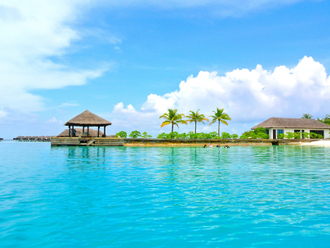
Egypt is the best for stories, our guide Ahmad told us as we made out way back from the airport to the hotel. As I looked out at the darkness, made bright with the lights of hotel complexes, I wondered whether Sharm Al Shaikh had little other than tales of hedonism to divulge.
Snorkelling site
But what a difference a day makes. There is no getting away from the fact that Sharm is brash and glitzy — perfect for kicking back for a week. The Red Sea is the draw card for many, reputed to be one of the best locations for snorkelling and diving.
My companion had never snorkelled before and we enjoyed a long day of excursion in Ras Mohammad National Marine Park, exploring the rainbow world of parrotfish and coral. There are also activities to get the adrenalin racing, from Jeep safaris and quadbiking to horseriding and the local water park.
Sharm is an excellent launchpad to explore Egypt's ancient history. Not only are there day excursions to Cairo and Luxor but you can also visit Petra in Jordan and occupied Jerusalem. A visit to St Catherine's Monastery gave us an insight into the peninsula's biblical associations.
As you leave the coast behind and wind into the interior, ranges of red mountains loom and recede in endless succession. It is remarkable to think that here thousands of Bedouin still live traditionally itinerant lifestyles.
The 6th-century monastery is a high-walled building at the foot of Mount Sinai, where Moses is said to have received the Ten Commandments. Inside is also the Burning Bush, where God is supposed to have appeared to Moses. Even if the religious connections of these wonderfully remote historic buildings do not touch you, their heritage will.
We dug further back into Egypt's past by taking the 45-minute flight to Luxor, where the Valley of the Kings and the Valley of the Queens offer a wealth of temples and tombs. We took the stuffy walk downwards, out of the glare of the sun deity into tombs adorned with bright hieroglyphics.
Crossing the Nile, we cowered at the sheer scale of the Karnak and Luxor temples, remarkably intact — it is impossible to fully appreciate their size until you are standing in the awesome shadow of a seated stone pharaoh.
In the evening, we took a horse-and-carriage ride around the backstreets of Luxor.
Of course, a visit to Egypt would not be complete without seeing those pinnacles of human achievement, the Pyramids of Giza.
I expected a Lawrence of Arabia-style trek through the desert on camelback. The reality is much more ordinary but still captivating.
Markers of the past
The three limestone pyramids draw a mark in the sand and signify the start of the desert, where the fertile flood plains give way. They represent not only where desert meets city but where the ancient world meets the modern.
From here, we visited the Sphinx. More treasures lie at Cairo's Egyptian Museum, packed with artefacts which include the many finds from the boy-king Tutankhamun's tomb.
The perfect condition of the exhibits more than made up for the fact that we didn't have time to see any of the mummies.
That's a treat I will just have to save for next time.










